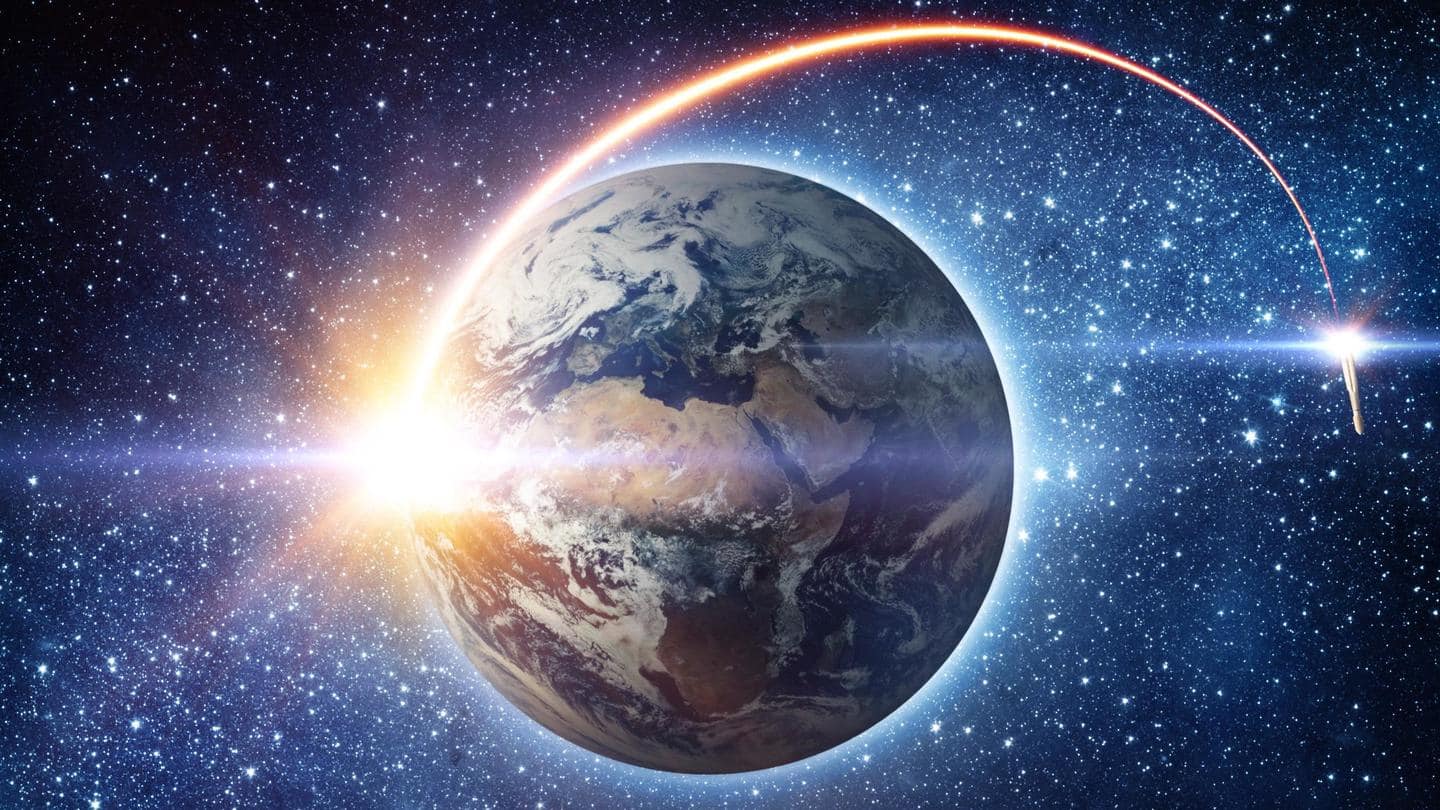
Billionaires are flying to space, but where does it begin?
What's the story
While Jeff Bezos prepares for a trip to space, let's not forget that just last week, his company Blue Origin took to Twitter to compare its mission and Richard Branson's Virgin Galactic Unity 22 mission to space. With commercial space travel looming inevitably closer for those with the means, it helps to understand what the debate is all about and where space actually begins.
No definition
FAA, NASA say space begins at altitude of 80 kilometers
Unsurprisingly, the debate of where space begins didn't originate with the two billionaires. There is no legal, internationally agreed-upon definition of the altitude at which the Earth's atmosphere ends and space begins. American authorities including NASA, the US military, and the Federal Aviation Administration (FAA) that authorizes manned spaceflight concur that space begins at an altitude of 80 kilometers from the Earth's surface.
Rivalry?
Branson didn't cross Kármán line and Blue Origin noticed that
Now, Branson and crew did touch this altitude before gliding back to Earth. However, in what could be a show of one-upmanship, Blue Origin boasted that Bezos's sub-orbital flight would cross the Kármán line that's at an altitude of 100 kilometers. The line is accepted as the boundary by the Fédération Aéronautique Internationale (FAI) and "96% of the world's population," according to Blue Origin.
Origins
The Kármán line is more of a 'folk theorem': McDowell
The Kármán line is named after Hungarian-American aerodynamicist Theodore Von Kármán who conceptualized the limit in the 1900s. However, The Atlantic reports that Kármán's calculations established that aerodynamic lift doesn't keep aircraft afloat above an altitude of 84 kilometers. The aerodynamicist wasn't demarcating a boundary for space. Reputed astronomer Jonathan McDowell says the Kármán line isn't scientific and Branson indeed flew to space.
Unaffected
Elon Musk will fly paying tourists to an orbital altitude
An astronomer at the Harvard-Smithsonian Center for Astrophysics, McDowell claims that since scientists believed the Earth's upper atmosphere fluctuates, the Kármán line altitude was rounded off to 100 kilometers. Meanwhile, another billionaire SpaceX CEO Elon Musk remains unperturbed by these debates since his idea of space tourism entails flying paying customers to the Moon or around the Earth at orbital altitude.
What is space?
Are spacecraft at orbital altitudes actually in space?
Well, why can't the world agree upon a boundary for space, you might ask? The problem is that the Earth's atmosphere doesn't entirely vanish at a defined altitude, but instead it gradually thins out. National Geographic explains that if space was defined as the lack of atmosphere, the International Space Station at an altitude of around 380 kilometers wouldn't technically be "in space".
Geopolitical angle
The beginning of space truly depends on who you're asking
Since outer space is free for all but airspace isn't, countries believe that the Kármán line separates airspace and outer space. In his posthumously published autobiography, Kármán said, "This is a physical boundary, where aerodynamics stops and astronautics begins, so I thought why should it not be a jurisdictional boundary? Below this line, space belongs to countries. Above this, there would be free space."
Does it matter?
Besides nations and astronomers, few care where space begins
While the acceptance of a boundary of space may be significant for countries, The Atlantic rightly observes that to everyone else, it's just a virtual line that helps us comprehend the vast cosmos. Surely nobody with a splendid view out of the spacecraft's window would remember to debate about the Kármán line with fellow astronauts!